EMAIL SUPPORT
dclessons@dclessons.comLOCATION
USInter-Subnet Routing Traffic Flow
For a BGP EVPN VXLAN network, symmetric Integrated Routing and Bridging (IRB) is used to forward data traffic. In a BGP EVPN VXLAN fabric, the same VRF-to-L3VNI mapping must be present on every edge device or VTEP where that VRF is configured. The procedure for forwarding routed traffic over VXLAN is very similar to routing operations in non-VXLAN environments.
Below topology is used to discuss the Routing traffic flow.
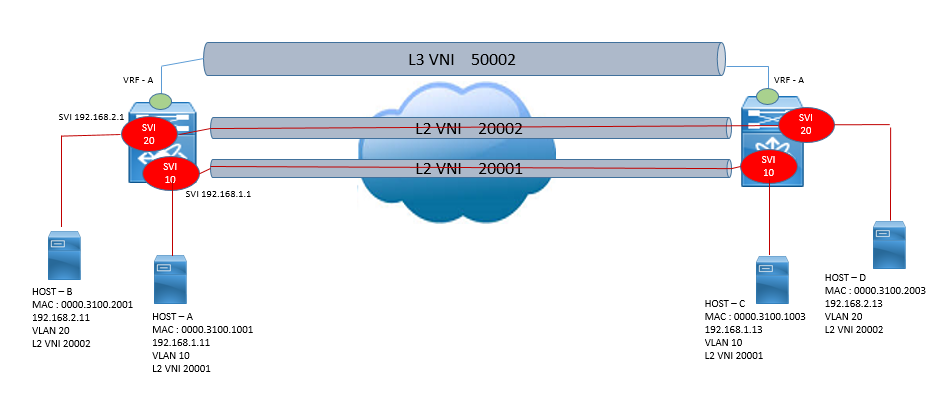
Four endpoints (Host A, Host B, Host C, Host D) residing in VRF A associated with L3VNI 50002 with further VNI 20001 is associated with IP subnet 192.168.1.0/24, on which endpoints Host A and Host C reside, and VNI 20002 is associated with IP subnet 192.168.2.0/24, on which endpoints Host B and Host D reside.
Before Routing happens, BGP control plane information must be populated and IP/MAC information about the endpoints is distributed using BGP route type 2 messages. Likewise, the subnet prefix information is distributed using BGP route type 5 messages.
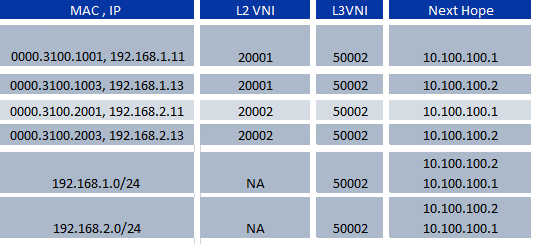
To Verify from BGP CLI use the following command to verify the able table.
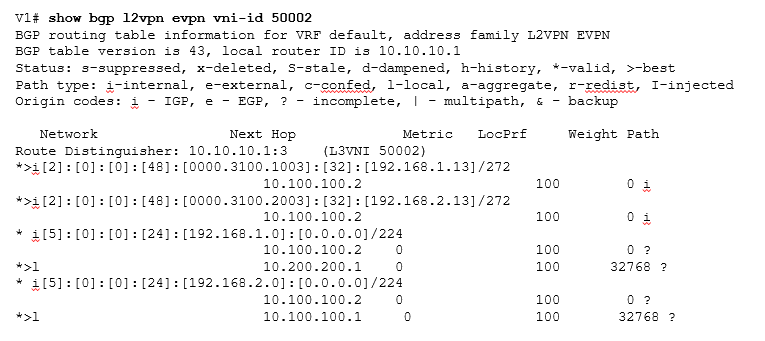
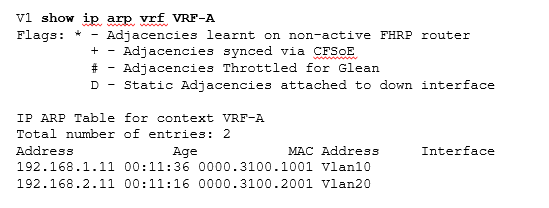
Once Control Plane is populated now it’s time for data traffic to flow. Now when host A wants to talk to Host B or Host D which is in different subnet, Host A will Send ARP request to get the Mac address of its gateway (MAC of VLAN 10).
Step1: ARP Request, from Host A to Distributed IP Anycast Gateway
Host A initiates an ARP request for the IP address of its default gateway. At VTEP V1, the ARP request is then evaluated through ARP snooping, and the retrieved source information is populated in the BGP EVPN control protocol. Host A’s MAC 0000.3100.1001 and IP 192.168.1.11 then becomes known as behind VTEP V1.
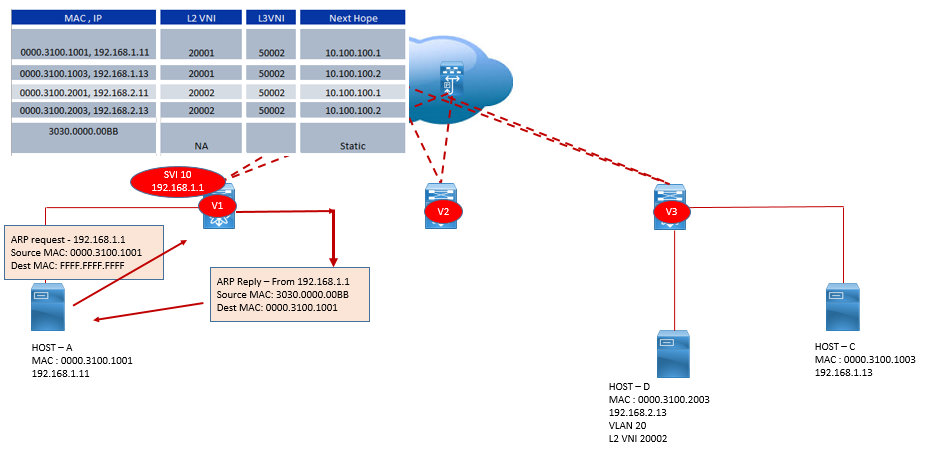
The ARP reply sent from the distributed IP anycast to endpoint Host A. Once this information is received, Host A updates its ARP cache with the AGM 3030.0000.00BB mapped to the default gateway IP entry 192.168.1.1. Now, endpoint Host A is ready to communicate with other endpoints in different subnets.





LEAVE A COMMENT
Please login here to comment.